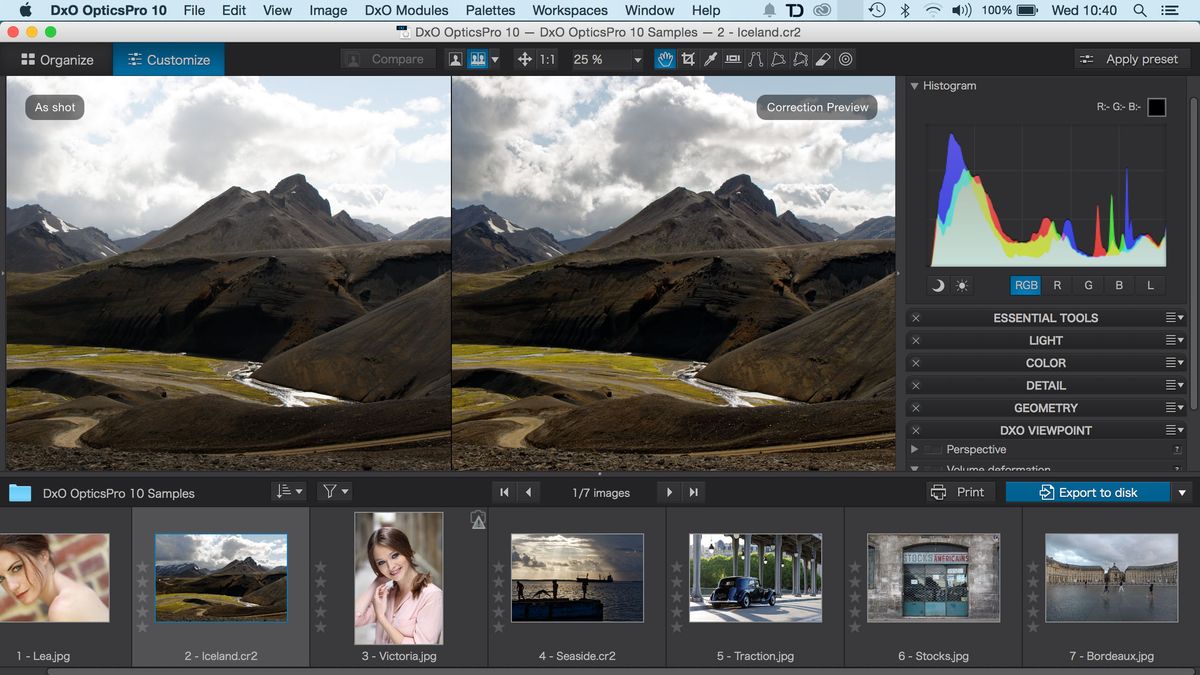
This is fun the first few times, but after the "new" has worn off you’ll likely simply move on to your image editing program. The viewer is handy because it allows you to see a before and after of the converted files, at any magnification.


When the single file or batch of files has been processed you have the choice of exiting the program or viewing the results. There are several default settings that can be used for this if you’re doing batch processing, but it is best to select a distance range manually for each image for optimum results. Optics Pro tries to extract this information from the file’s EXIF data, but not all cameras provide it. The one bit of user intervention that may be needed is to tell the program the approximate distance at which the shot was taken. Most users will simply purchase a camera module and lens module appropriate for the equipment that they own and use. In Figure 2 below you can see a window showing the modules that are loaded on my test system. No need to link modules to files - Optics Pro does this automatically. You can simultaneously process images done with different camera bodies and different lenses, but of course you have to have purchased the necessary modules. Files that you have loaded will be processed and transferred to the directory of your choice. If you have the right camera and lens modules (more on this in a moment) all you have to do next is to press Start. These files currently need to be JPGs generated by the camera (not converted from RAW files), though RAW files will be supported directly before year’s end.
#Dxo optics pro 10 review series#
The Addbutton is used to load a file or series of files, or you can drag-and-drop files from any file browser window. When run Optics Pro is very simply to use. This is in fact what DO Labs has done with Optics Pro. It didn’t take a rocket scientist (or mathematician) to figure out that if you can measure the errors in a system, using this information you might be able to correct them as well.
#Dxo optics pro 10 review professional#
For their professional test product, DxO Analyzer, they developed mathematical tools which could measure to a high degree of accuracy various optical characteristics of lenses and sensors.

DO Labsis a Paris based company that specializes in the application of mathematics to image enhancement. It generated a great deal of excitement when it was first announced at the PMA show, and much speculation about how well it would work. Optics Pro, the subject of this report, is a stand-alone program (PC and Mac) that allows images shot with specific digital cameras and lenses to be corrected for distortion, vignetting, blur (sharpness) and lateral chromatic aberration. I utilize that program in my digital camera and lens tests, and you can read more about it here. This is not DxO Analyzer, a product that you may have read about previously on these pages, which is a professional optical test system designed by DO Labsfor use by camera and lens makers, and also reviewers. _ What Is It?įirst, I should explain what it’s not. I have no financial relationship with the company. This Review First Published - May 11, 2004ĭisclosure: I have been a beta tester of DxO Optics ProĪnd have consulted with DO Labson the development of this product.


 0 kommentar(er)
0 kommentar(er)
